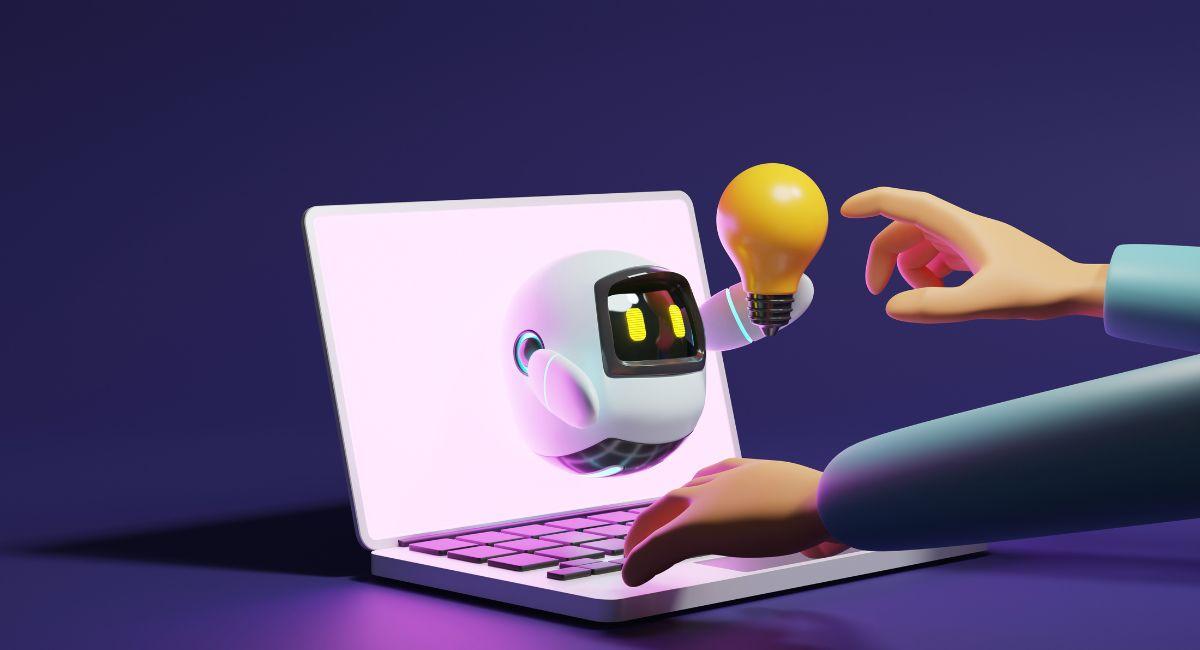From Desktops to Distributed Ledgers: An Amazing Tale of Two Democratizations – Windows 95 vs. Web3

The digital landscape has undergone a metamorphosis since the days of bulky monitors and dial-up connections. In 1995, Microsoft’s Windows 95 ushered in a new era of personal computing, making technology more accessible to the average user. Today, Web3, a buzzword-laden concept, promises a similar revolution – but on the internet itself. However, a closer look reveals intriguing parallels and underlying questions about the true democratizing potential of each.
Windows 95: Putting Power in the Hands of the People
Prior to Windows 95, personal computers were intimidating machines. MS-DOS, the dominant operating system, required users to navigate through cryptic commands. Windows 95 changed that. With its user-friendly graphical interface, drag-and-drop functionality, and intuitive features like the Start menu and taskbar, it empowered everyday people to interact with their computers with ease. This shift was akin to replacing a complex language with a visual one, making technology less exclusive to tech-savvy individuals.
The impact was undeniable. Computer sales soared, bringing the power of communication, information access, and basic productivity tools to a wider audience. Educational institutions and businesses adopted Windows 95 en masse, fostering a more digital world. This democratization, however, had limitations. While Windows 95 reduced the barrier to entry, it did not eliminate the cost barrier. Computers remained expensive, and internet access, still in its nascent stages, was another hurdle.
Web3: A Paradigm Shift or a Technological Chasm?
Web3, an umbrella term for a blockchain-based internet, promises a decentralized future. Proponents envision a web where users control their data and online experiences, free from the grip of tech giants. Cryptocurrencies and decentralized applications (dApps) are seen as tools for financial inclusion and empowering users to own a piece of the digital pie.
On the surface, Web3 echoes the democratizing spirit of Windows 95. It seeks to empower individuals and dismantle gatekeepers. However, skepticism abounds. The current state of Web3 is complex and often opaque. Understanding blockchain technology, navigating cryptocurrency wallets, and interacting with dApps requires a significant technical understanding, potentially creating a new digital divide. Furthermore, the nascent Web3 ecosystem is rife with scams, security vulnerabilities, and extreme market volatility, posing risks for the uninitiated.
Also, read – Dawn of a New Era: dappOS Aims to Be Web3 “Windows 95” with Intent-Centric Infrastructure
Parallels and Peril in Windows 95 and Web3’s Quests for Democratization

The technological landscape is littered with ambitious projects aiming to usher in a new era of accessibility and user empowerment. Two such endeavors, separated by decades, share a striking common thread: Windows 95 and Web3. Both sought to democratize their respective domains, yet both have encountered unforeseen challenges in ensuring true inclusivity.
Despite their distinct technological landscapes, Windows 95 and Web3 share a fundamental parallel: the quest for democratization. Windows 95 broke down the barriers of technical complexity, making computers accessible to a wider audience. Web3 aspires to do the same for the internet, wresting control from corporations and placing it in the hands of users.
However, both movements have encountered unforeseen hurdles in their journeys. The initial cost of computers limited the reach of Windows 95, creating a digital divide between those who could afford the technology and those who couldn’t. Similarly, Web3’s complexity threatens to create a new kind of digital divide. The current state of Web3, with its myriad blockchains, protocols, and cryptographic concepts, can be daunting for newcomers. This complexity can inadvertently exclude those who lack the technical knowledge to navigate the intricacies of the space.
Beyond Parallels: The Fragmentation Factor
A crucial difference emerges when we delve deeper. Windows 95 ushered in a standardized platform, making technology more accessible. PCs, regardless of manufacturer, largely adhered to the Windows 95 framework. This standardization was instrumental in its democratizing effect.
Web3, on the other hand, is inherently decentralized and fragmented. There’s no single governing body or standardized protocol. This lack of standardization could lead to a situation where only those who understand the intricacies of different blockchains, crypto wallets, and decentralized applications (dApps) can truly participate. The decentralized nature of Web3, while offering advantages in terms of censorship resistance and control, presents a new challenge: ensuring inclusivity in a complex and fragmented technological landscape.
The Road Ahead: Widening the Bridge, Not the Divide

The parallels between Windows 95’s democratization of computing and Web3’s aspirations for a user-centric internet are striking. However, the stories of both movements serve as valuable lessons: technological advancements, while intended to empower, can introduce new barriers if not accompanied by robust accessibility measures. For Web3 to fulfill its promise of a more democratic and equitable digital landscape, it must prioritize user-friendliness, education, and clear communication. Here’s a deep dive into how Web3 can bridge the digital divide and ensure inclusivity:
1. Simplifying User Interfaces: From Cryptic Code to Intuitive Interaction
-
Learning from the Past: Windows 95’s success stemmed from its intuitive graphical user interface (GUI). Similarly, Web3 needs to move beyond complex code-based interactions and embrace user-friendly interfaces. Imagine a Web3 experience as seamless as using a modern mobile app, where interacting with blockchains and decentralized applications (dApps) feels as natural as browsing the web.
-
Visualizations and Gamification: Technical concepts like blockchain architecture and tokenomics can be daunting for newcomers. Leveraging interactive visualizations, gamified tutorials, and clear metaphors can transform complex ideas into engaging learning experiences.
-
Focus on User Journeys: Map out typical user journeys within Web3 applications. Design interfaces that cater to specific user needs, whether it’s buying NFTs, participating in DeFi protocols, or simply browsing a decentralized marketplace.
2. Building Educational Resources: Empowering Users Through Knowledge
-
Comprehensive Knowledge Hubs: Create easily accessible educational resources that explain the core concepts of blockchain technology, cryptocurrency, and Web3 principles. These resources should cater to different learning styles, offering video tutorials, interactive articles, and downloadable guides in multiple languages.
-
Community-Driven Learning: Foster a culture of knowledge sharing within the Web3 community. Encourage experienced users to create educational content, conduct workshops, and answer questions from newcomers.
-
Partnerships with Educational Institutions: Collaborate with universities, coding bootcamps, and online learning platforms to integrate Web3 education into existing curriculums. This can help introduce Web3 concepts to a wider audience and prepare future generations for a decentralized future.
3. Fostering Community and Collaboration: Building Bridges Through Shared Purpose
-
Open Forums and Discussion Boards: Create vibrant online forums and discussion boards where users can connect, share experiences, and learn from each other. This fosters a sense of community and belonging which can be particularly valuable for newcomers navigating the complexities of Web3.
-
Collaborative Projects and Hackathons: Organize collaborative projects and hackathons that encourage developers and non-technical users to work together on building user-friendly Web3 applications. This fosters a collaborative spirit and incentivizes the creation of solutions that address real-world user needs.
-
Diversity and Inclusion Initiatives: Actively promote diversity and inclusion within the Web3 community. This includes ensuring educational resources and communication materials are accessible in multiple languages and cater to different learning styles. Additionally, fostering a welcoming environment that celebrates diverse perspectives is crucial for attracting a broader user base.
Web3 has the potential to revolutionize the internet by empowering users and fostering a more democratic online ecosystem. However, achieving this vision requires a collective effort from developers, educators, and the broader Web3 community. By prioritizing user-friendliness, education, and clear communication, Web3 can bridge the digital divide and ensure that its benefits are accessible to all, not just the technologically savvy. The road ahead necessitates not just innovation but also a commitment to inclusivity, ensuring that Web3 truly lives up to its promise of a more equitable digital future. As the saying goes, “The future is already here – it’s just not very evenly distributed.” Web3 has the power to change that, but only if it prioritizes widening the bridge, not the divide.
Conclusion: A Future Built on Shared Progress
The relentless march of technology is paved with ambitious quests for democratization. Windows 95 stands as a testament to this ongoing pursuit, shattering the barriers to personal computing with its intuitive interface. Today, Web3 emerges as the latest standard-bearer, carrying the torch of user empowerment to a new frontier: the internet itself. This vision of a decentralized web, where control and ownership reside with users, holds immense potential. However, both Windows 95 and Web3 serve as cautionary tales, reminding us that even the most revolutionary advancements can falter without a commitment to inclusivity.
Learning from the Past, Shaping the Future
Windows 95’s democratizing impact was undeniable, yet its initial cost created a digital divide. Web3 faces a similar challenge, with its current complexity threatening to exclude those who lack the technical knowledge to navigate the intricacies of blockchains and dApps. To avoid replicating past mistakes, Web3 must prioritize user-centric design. Imagine a future where interacting with blockchains feels as natural as using a web browser, and complex concepts are translated into intuitive interfaces. This requires a shift from code-centric interfaces to user-friendly experiences that cater to a diverse range of technical abilities.
Education: The Bridge Between Knowledge and Opportunity
Knowledge is the key that unlocks the true potential of Web3. Comprehensive educational resources, encompassing video tutorials, interactive articles, and downloadable guides in multiple languages, are crucial for bridging the knowledge gap. Building partnerships with educational institutions can further propel this mission, integrating Web3 concepts into existing curriculums and preparing future generations for a decentralized future. However, education shouldn’t be a one-way street. Fostering a culture of knowledge sharing within the Web3 community empowers experienced users to become educators, creating a collaborative learning environment where everyone can contribute and grow.
Community: The Strength in Shared Purpose
A thriving community is the bedrock of any successful movement. Web3 must cultivate vibrant online forums and discussion boards where users can connect, share experiences, and learn from each other. This fosters a sense of belonging and empowers newcomers to navigate the complexities of the space with confidence. Furthermore, organizing collaborative projects and hackathons that encourage diverse teams to work together can spark innovation and create user-centric solutions that address real-world needs. By actively promoting diversity and inclusion within the Web3 community, ensuring educational materials are accessible to all, and celebrating a wide range of perspectives, Web3 can build a welcoming space that fosters shared progress.
A Collective Journey
The democratization of technology is an ongoing narrative, a continuous process of breaking down barriers and empowering users. Web3 has the potential to write a new chapter in this story, revolutionizing the internet by placing control and ownership back in the hands of users. However, this future hinges on a collective effort from developers, educators, and the broader Web3 community. By prioritizing user-centric design, education, and community building, Web3 can ensure that the bridge to this new world is wide enough for all to cross. The future of the internet shouldn’t be a privilege for the few; it should be a shared experience built on collaboration and inclusivity. Web3 has the power to make this vision a reality, but only if we collectively strive to widen the bridge, not the divide. As we move forward, let us remember that true progress is not measured by technological leaps alone, but by the number of people empowered to take part in the journey.




























































